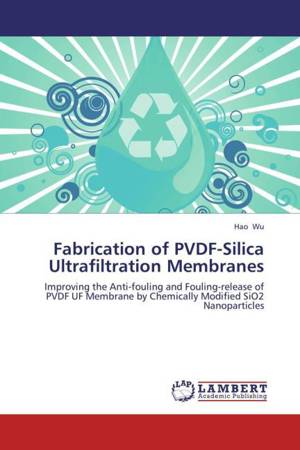
- Afhalen na 1 uur in een winkel met voorraad
- Gratis thuislevering in België vanaf € 30
- Ruim aanbod met 7 miljoen producten
- Afhalen na 1 uur in een winkel met voorraad
- Gratis thuislevering in België vanaf € 30
- Ruim aanbod met 7 miljoen producten
Zoeken
Fabrication of PVDF-Silica Ultrafiltration Membranes
Improving the Anti-fouling and Fouling-release of PVDF UF Membrane by Chemically Modified SiO2 Nanoparticles
Hao Wu
Paperback | Engels
€ 106,45
+ 212 punten
Omschrijving
The highly hydrophobic nature of PVDF membranes makes it prone to fouling, and hydrophilic additives are frequently used to improve its wettability and fouling performance. Another approach to mitigate fouling is to alter membrane via surface modification. Under optimum conditions of membrane fabrication, in-situ membrane surface modification may be achieved as a result of the spontaneous migration of amphiphilic additives to the membrane upper surface resulting in so-called surface segregation. In this study, a novel approach was taken to use nanoparticles as carriers and anchors for antifouling ligands. Commercial SiO2 nanoparticles were chemically functionalized by silane coupling agents, which were then further used to immobilize PEG molecules on their surface. Modified nanoparticles were directly dispersed in casting solution and modified SiO2/PVDF blend membranes were prepared. The results demonstrated that the surface modified SiO2 nanoparticles acted as a carrier that facilitated the migration of PDMS or PEG molecules immobilized on SiO2 to the surface of the membrane, contributing to the modification of surface and hence improvement of the membrane fouling resistance.
Specificaties
Betrokkenen
- Auteur(s):
- Uitgeverij:
Inhoud
- Aantal bladzijden:
- 228
- Taal:
- Engels
Eigenschappen
- Productcode (EAN):
- 9783659340529
- Verschijningsdatum:
- 7/02/2013
- Uitvoering:
- Paperback
- Afmetingen:
- 150 mm x 220 mm
- Gewicht:
- 340 g

Alleen bij Standaard Boekhandel
+ 212 punten op je klantenkaart van Standaard Boekhandel
Beoordelingen
We publiceren alleen reviews die voldoen aan de voorwaarden voor reviews. Bekijk onze voorwaarden voor reviews.








